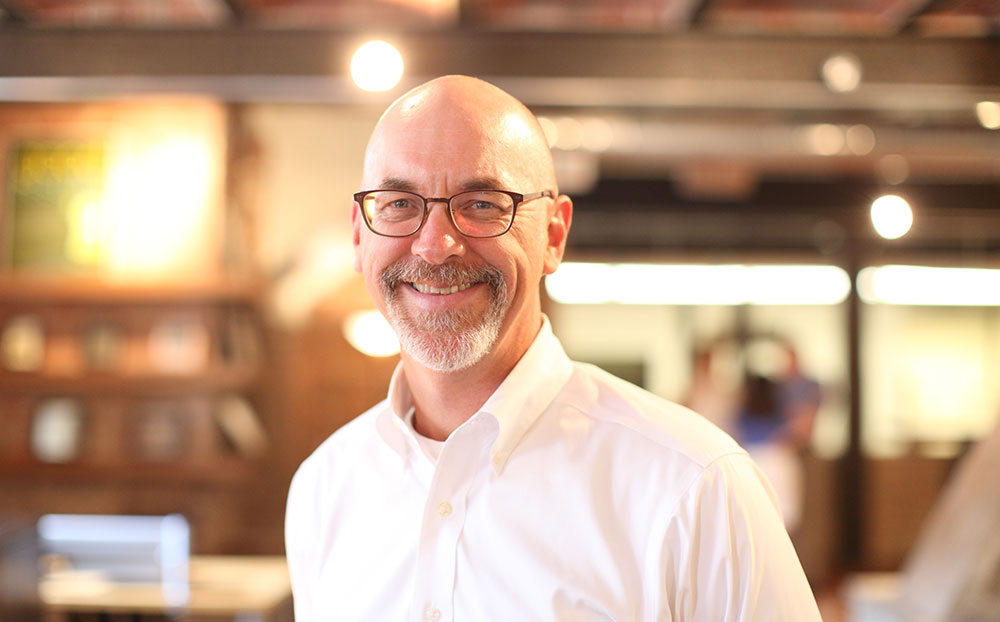Benefactor Group welcomes Steve Beshuk to our organization. Steve helps nonprofit organizations have the right operational systems and processes in place. With Steve, we have added data, operational, and business intelligence consulting to our firm while continuing to deliver excellent fundraising, capital campaign, and leadership consulting.
Steve, how did you get into this line of work?
Like a lot of people, I fell into nonprofits. After college, I was fortunate someone encouraged me to apply for a fundraising position. I started doing special events for Cystic Fibrosis Foundation; it was hard work and rewarding. From there I worked with Junior Achievement and the American Red Cross and began learning about the discipline of nonprofit development, thanks to AFP. I also realized more and more how valuable good data could be. At the Red Cross, I led a CRM conversion. I was hooked. It combined my love for the mission of nonprofits and fundraising with a focus on how technology and quality data could make a difference. I spent the next 15 years with a national consulting firm helping nonprofits find, implement, integrate, and improve CRM systems and business processes. That led naturally to business intelligence (BI), which I see as the “top of the data pyramid.” BI provides an essential feedback loop: the reports, dashboards, and analytics that show our clients how their strategy is truly working. Now, I am thrilled to join Benefactor Group. It’s the perfect partnership! Benefactor Group delivers excellent campaign and leadership consulting and I will be able to add more of the data, operational, and business intelligence consulting. We are truly a full-service firm. I am really excited about it.
How do you approach consulting?
For me, it’s all about helping nonprofits be more effective. While this may sound counter-intuitive, the hardest part of being effective isn’t knowing what to do (though that is important, you need to have a solid destination), it’s helping clients get it done. It’s the difference between buying the gym membership and using it. I think the key is to start doing the fundamentals well, like right-sized technology, sound business processes, and measurement. The working-out analogy is really applicable here: count your steps, weigh yourself, etc. Attaching a number to a goal and measuring progress has a magical effect. You’ve seen signs that show how fast you’re going in your car? They are proven to have a significant effect on people’s behavior, simply by showing someone what they are doing. Technology can provide the same guidance.
How will you help Benefactor Group’s clients do that?
I begin by assessing the foundational aspects of a nonprofit’s operations. You could look at it like Maslow’s hierarchy of needs: the foundation of the triangle is food and water. Then you move to safety and self-confidence and ultimately the peak, which is self-actualization. Getting to the top requires a sound foundation. Effective nonprofits, big and small, work that way. They start by focusing on the fundamentals and less on the “big shiny object.” Don’t get me wrong, I like the “big shiny object,” but you don’t have to start spending $50,000 or $100,000 to implement software to be effective. Start by clearly defining what you care about, learn if you have the data you need, evaluate how you are currently performing, assign a numerical goal to the objectives, and then create a system to share how you are performing – this is where the cool stuff lives, like reports, scorecards, dashboards, and so on.
What’s the biggest opportunity that you see for nonprofit organizations?
A couple come to mind: First, a nonprofit can make meaningful improvement by reevaluating its measures – its KPI (key performance indicators). If the right KPI are in place, that means a lot of other fundamentals have been done well too. Second, nonprofits should take advantage of the power of analytics. I don’t mean “big data” necessarily, but using the data you already have to learn deeply about your constituents. When I first started in this industry, analytics meant canned reports and manually building huge spreadsheets. Back then, analytics required a statistician. Today, it seems that everyone is interested in and actually doing pretty sophisticated analytics. The technology is so much easier to use than it used to be, it’s incredible. At the same time, the technology can also make it easier to make mistakes and not know it. That’s why we make sure we work with qualified analysts.
What tools are in place to help organizations build a data-driven culture?
From a technology standpoint, many tools exist. I could list them and it would be out of date in a week. The tools are great and can be helpful, but as I said before, the tools should be the last step in the process, not the first. Define what you care about, quantify it, and THEN determine what software best fits the bill.
What do you do to unplug from technology in your spare time?
First choice is to spend time with my family. I have two not-quite-teenage girls. When I am not working, we hangout. I also love to cook, play golf, I play a little music, and, of course, root for THE Ohio State Buckeyes.





